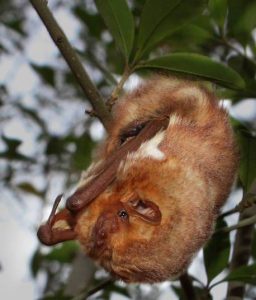Most of our encounters with nature occur during the day, whether it’s hiking, or walking in a park and seeing plants and animals all around us. But, did you know that nature is just as active, if not more active, at night?
There are several species of animals that are strictly nocturnal. In August, we talked about why certain animals have evolved nocturnal behaviors. After Dark In The Park is coming up here at River Legacy Oct. 6th-8th. So, we think this is a good time to revisit the topic of nocturnality a bit more in depth with a couple of examples.
When you are out in nature at night, you may be able to spot some species of nocturnal animals. Bats (Order Chiroptera) are well adapted to night life. Some bats have evolved echolocation to find their prey, which includes flying insects such as moths and mosquitoes. Echolocation just means that bats emit sound waves and are able to detect when they bounce off their prey to determine where it is. Some common species of bats in this area include the Mexican free-tailed bat (Tadarida brasiliensis), the Eastern red bat (Lasiurus borealis), and the hoary bat (Lasiurus cinereus). When you are attending After Dark In The Park with us, take a few seconds to look up, especially near light posts, and see if you can spot any bats!
Other nocturnal animals that you might see or hear while being outdoors at night are owls, raccoons, and opossums.
Be sure to come out to After Dark In The Park and do not miss the fun, which obviously includes experiencing the forest at night. For more information about the event, please visit www.riverlegacy.org.

